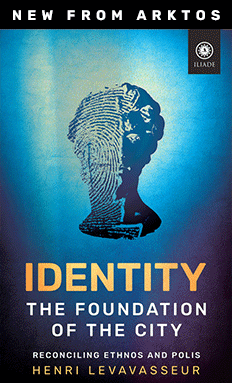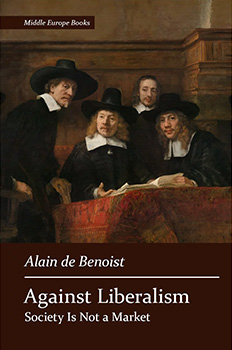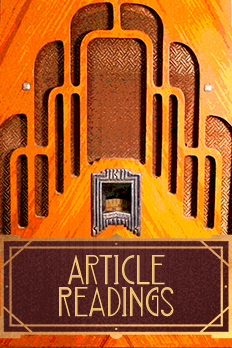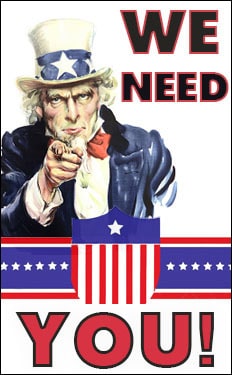The Great Nation We Once Were
Jared Taylor, American Renaissance, November 6, 2025
A story sculpted in marble.
This video is available on Rumble, Bitchute, Odysee, Telegram, and X.
For more than a century, two wonderful marble statues flanked the east entrance to the United States Capital building. One was “The Rescue,” installed in 1853. A white man is overpowering an American Indian who has a tomahawk in his hand.

The Indian is clearly frightened as the white man — some thought he represented Daniel Boone — calmly disarms him.
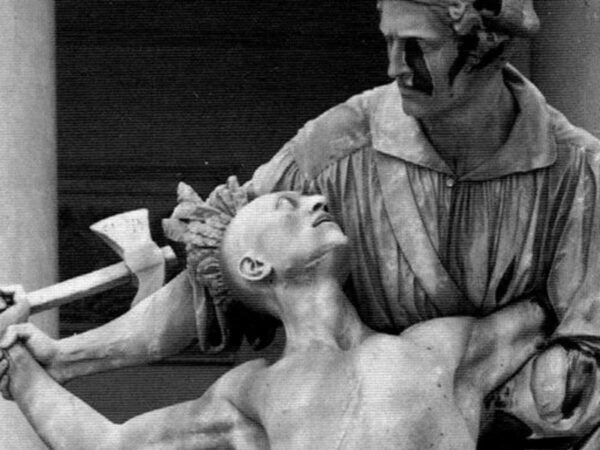
The white woman protects her baby.

The sculptor, Horatio Greenough said, “I have endeavored to convey the idea of the triumph of the whites over the savage tribes, at the same time that it illustrates the dangers of peopling the country.”

A contemporary art critic wrote, “The thought embodied in the action of the group, and immediately communicated to every spectator is the natural and necessary superiority of the Anglo-Saxon to the Indian.”

You can just barely see the statue in its place at the Capitol in this 1853 photo.
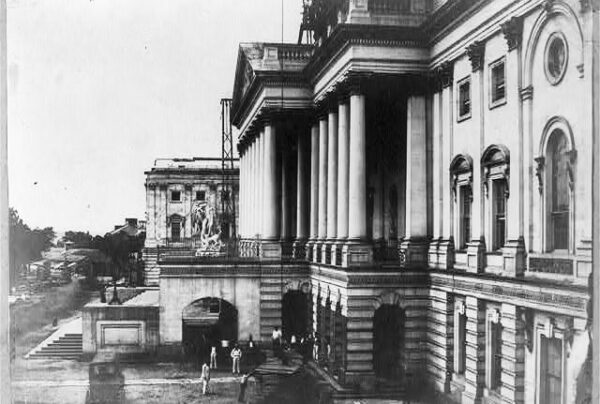
And here is a photo taken about the same time from the front that shows two statues flanking the staircase, with The Rescue on the right.

What was the statue on the left?
It is called “The Discovery of America,” by Luigi Persico, and was installed in 1844. Columbus is striding forward in full armor.
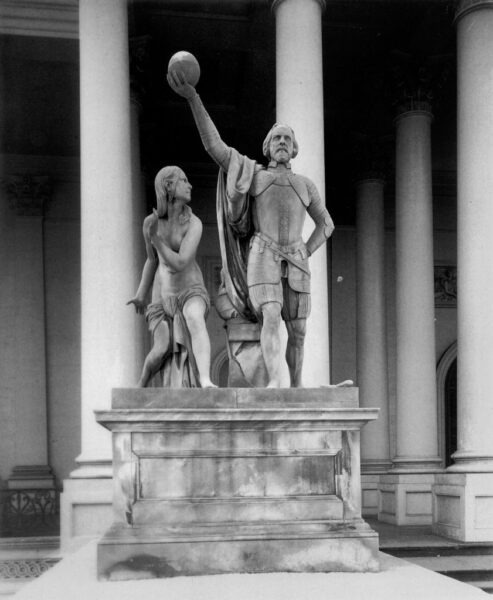
James Buchanan, who went on to become the 15th President, described the sculpture: “The great discoverer when he first bounded with ecstasy upon the shore, all his toils past, presenting a hemisphere to the astonished world, with the name America inscribed upon it. Whilst he is thus standing upon the shore, a female savage, with awe and wonder depicted in her countenance is gazing upon him.”
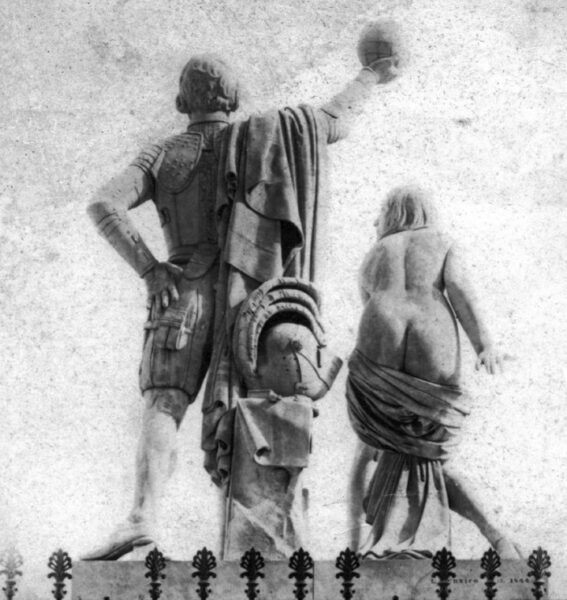
For more than a century, congressmen and senators walked between these monuments to white destiny and national pride. This is Lincoln’s first inauguration, March 4, 1861. You can see both statues in this photo.
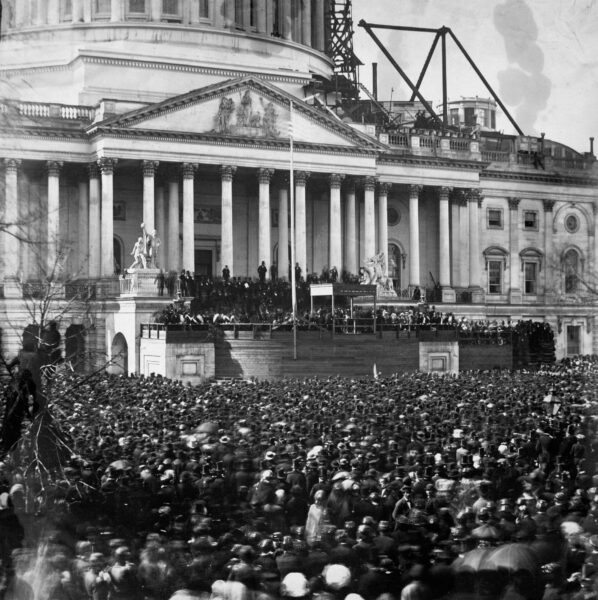
Neither The Rescue nor The Discovery of America still stands. Indians began to beef about them. In 1939, they pressured Congressman Usher Burdick of North Dakota — shown here with The Rescue — to submit a resolution that it be “ground into dust and scattered to the four winds, that no more remembrance may be perpetuated of our barbaric past.”

The resolution went nowhere.
In 1941, Rep. James O’Connor from Montana proposed a resolution, calling the statue “an atrocious distortion of the facts of American history and a gratuitous insult.”

That also went nowhere. Congressmen liked the statue.
In the 1950s, an Indian activist named Leta Myers Smart started a campaign to have the statues taken down.

She was just 1/16th Omaha Indian, but she was a fanatic. She testified in Congress claiming the statues “fail to portray the true character of the American Indian.” Congress ignored her.
She got a lucky break in 1958, when all the sculpture on the east façade of the Capitol was removed during construction to extend the Capitol building.
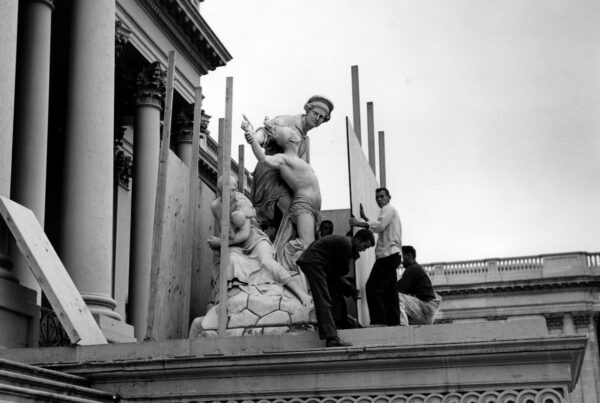
Here is part of The Rescue being hoisted off its pedestal.
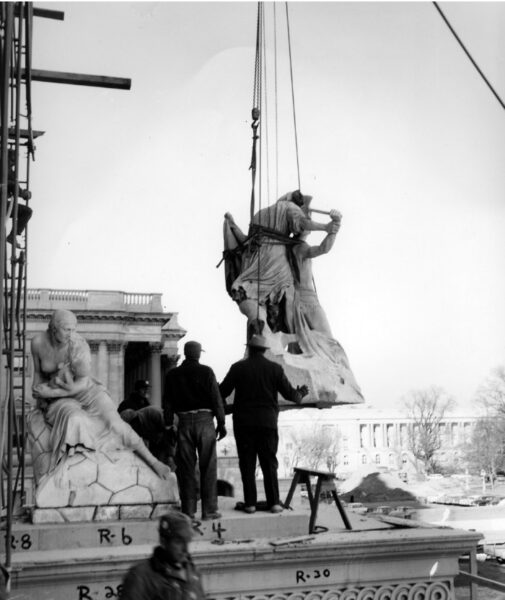
Harper’s magazine joined the campaign against the statues, and in 1959, it published an article by Smart, in which she wrote: “The American Indian is no longer, if he ever was, the blood-thirsty savage [Horatio] Greenough made him out to be in this group of sculpture . . . we feel we ought to rescue the Indians from these deplorable straits.”
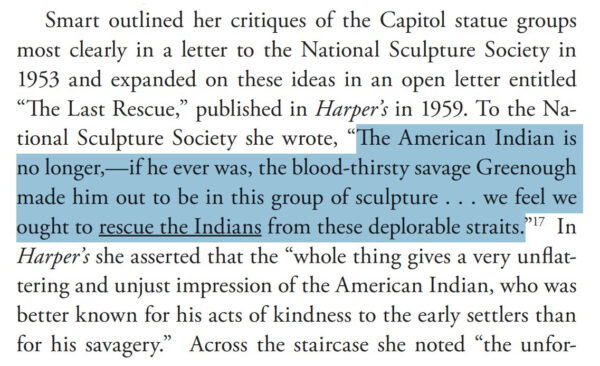
Once the statues were in storage, it was no longer up to Congress to put them back. Instead, just five men made the decision: a commission made up of the Vice President Richard Nixon, Speaker of the House Sam Rayburn, the minority leaders of both chambers, and the Architect of the Capitol.
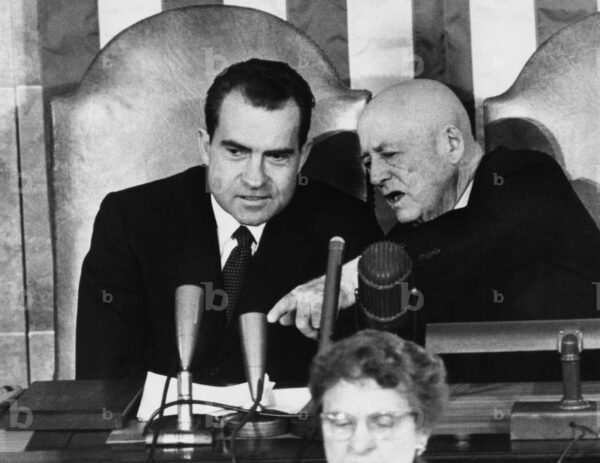
They decided that the statues were maybe out of step with the times, but also they were badly weathered and it would cost a lot to restore them.
Harper’s celebrated with a cartoon that recalled the “ground into dust” resolution 20 years earlier.

But not everyone was pleased. The next year, columnist Jack Anderson called removing the statues a “massacre,” and added, “Today’s Indians have pretty well adopted the habits and accoutrements of the white man, including a powerful lobby which brings much wampum from the Great White Father for loss of real or imaginary rights each year. Scalping has been reduced to perhaps peddling a few tickets to the Cotton Bowl at outrageous prices.”

There was no popular movement to take down the statues. These ladies and a little girl stand proudly before the pioneer woman and child who are being heroically saved from slaughter.
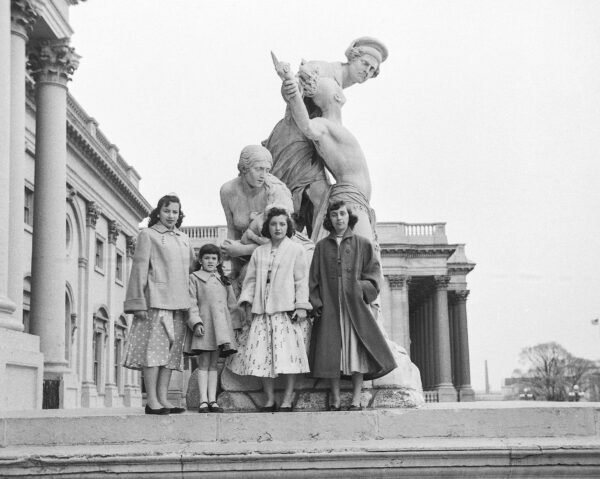
It was just a few people, including men we think of as “conservatives,” who capitulated.
It’s always the same. If non-whites make enough noise, we worry about their feelings. Did white men have to protect their wives and children from murderous savages? Countless times. And they were savages. What else do you call stone-age people who are trying to kill you? All this worry about non-white feelings started earlier than you probably think it did.
Now, of course, we’re supposed to care about the feelings of all non-white people everywhere, especially the ones who are here illegally.

Credit Image: © Aashish Kiphayet/ZUMA Wire
No, thanks. I’m proud my ancestors brought European civilization to the New World. They built this country as a land for white people. They did great things and built monuments in the hope that we would never forget. That was the spirit that made America great, and that’s the only spirit — and we are the only people — who will ever make it great again.






